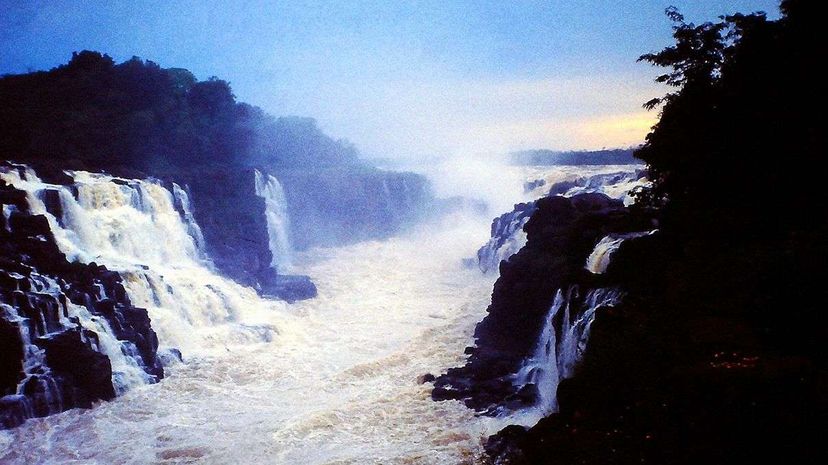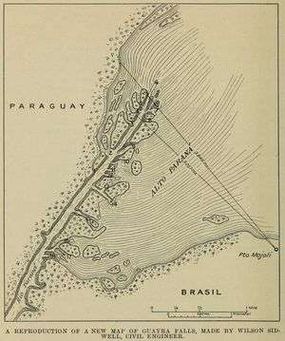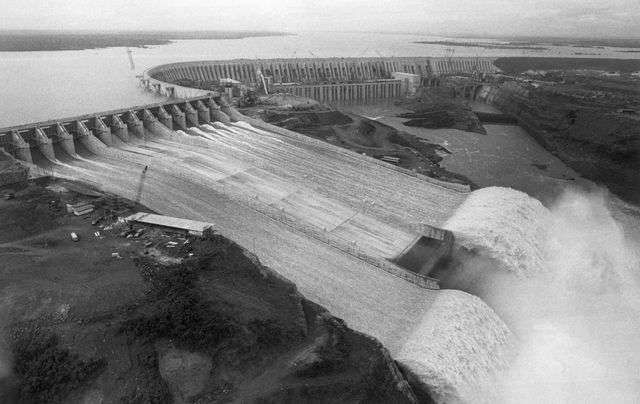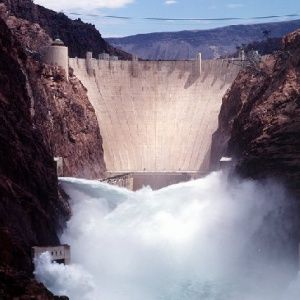
Some pretty good things happened in the '80s. Michael Jackson's "Thriller" became an anthem, "Back to the Future" hit the big screen and every kid toted a Trapper Keeper to the first day of school.

But for every awesome 1980s hit like Madonna, Donkey Kong or the Cabbage Patch Kids, there was a cringe-worthy balance. Mile-high bangs, mullets and bad perms come to mind. Oh, and that one time we humans erased one of the biggest waterfalls on the planet. Just got rid of it! There was that, too.
Advertisement
At the dawn of the '80s as it had been for millennia before, South America was home to Guairá Falls. The massive cascade on the border of Paraguay and Brazil was actually a series of powerful waterfalls that produced the greatest volume of falling water in the world.
(Admittedly, The Democratic Republic of Congo's Boyoma Falls, a series of extremely wide but very low and not-nearly-as-dramatic falls, the tallest of which drops only 16 feet (5 meters, might quibble with that fact.)
To understand how the falls were laid out, check out this map of the site taken from the 1871 book "A New Gateway to the Heart of South America." The amount of mist generated by Guairá Falls created a perpetual rainbow when viewed from certain angles. Although there were a total of 18 waterfalls, the site's alternative moniker — Seven Falls — was a nod to seven of its most voluminous waterfalls. The YouTube user-made video below compiles a number of vintage photos of the waterfalls:
The falls were formed by the Paraná River, which journeyed through the Maracaju/Mbaracuyú Mountains before entering increasingly narrow canyon walls, eventually encountering a funnel just 200 to 1,250 feet (61 to 381 meters) wide before churning over a precipice.
As the water dropped 375 feet (114 meters), the deafening noise could be heard at least 20 miles (32 kilometers) away. That's not surprising, considering Guaira Falls was estimated to have twice the flow rate of Niagara Falls on the U.S./Canada border.
Guairá Falls, which was once a major tourist attraction along the border of Brazil and Paraguay, is now a placid lake behind a hydroelectric dam. The falls were submerged when the 4.8-mile Itaipu Dam was built downriver. The river, the seventh-largest in the world, was diverted starting in 1978. Approximately 10,000 families living near the shore of the river had to relocate.
On Oct. 13, 1982, the multi-phase project reached the point at which the dam was closed, allowing the Paraná River to flood Guairá Falls. The first electricity was generated beginning in 1984, with the full dam completed in 1991. The Itaipu Dam now provides 75 percent of the electricity used by Paraguay and about 25 percent of the electricity in Brazil — in total, enough to power the state of California.

The Itaipu dam site, located only 12.5 mile (20 kilometers) from the popular Igauzu Falls, remains a tourist attraction, though more as an icon of industry. Think one day we could just shut off the dam and restore the drowned falls? That's not possible, as the falls' rock face was dynamited during the damming process, and the original geological structures that shaped the falls no longer exist.
In 2014, more than 856,000 people visited the dam, some paying homage not to the massive power plant, but to the site's former natural wonder.
Advertisement
